By Sam McEachern, GM News
By Sam McEachern, GM News
The Cadillac Escalade is among the most well-known nameplates in the automotive industry – thanks in part to its status as the preferred ride for many athletes, musicians, and movie stars. But this flashy full-size luxury SUV had a humble beginning.
In the late 1990s, the luxury SUV market was rising rapidly, and General Motors’ rivals were working on upmarket versions of their own utility vehicles. Cadillac came up with a simple yet effective solution: take GMC’s already upscale Yukon Denali and add Cadillac’s signature grille and a few other exterior and interior tweaks. Cadillac labeled its new creation the Escalade – a reference to a siege warfare tactic that involves scaling defensive walls or ramparts with the aid of ladders or siege towers.
Mechanically, the 1999 Escalade was identical to its GMC-badged sibling, which enabled GM to bring it to market only ten months after the project was approved. Under the hood sat the familiar 5.7L Vortec V-8, producing 255 horsepower and 330 lb-ft of torque, which sent power to a four-speed automatic transmission connected to GM’s AutoTrac selectable four-wheel-drive system. It was built alongside the Yukon, as well as the Chevrolet Tahoe and Suburban, at GM’s Arlington Assembly plant in Texas1 – which remains the exclusive production site for the automaker’s full-size SUVs today.
Where the Escalade did differ from the Yukon was in its exterior styling and interior features. Cadillac applied its signature grille to the front of the SUV, while the interior was overhauled with perforated premium leather seating surfaces (the same used in Cadillac’s passenger cars), real wood trim, and Cadillac script on the console veneer, among other small tweaks. The Escalade also featured standard OnStar2 – early evidence of GM’s continued leadership in innovation, technology, and connected vehicles.
But the Escalade’s real story wasn’t written in spec sheets or brochures - it was written on the streets. Almost overnight, the SUV became a status symbol among America’s celebrity cohort. Cadillac executives were privately puzzled by the trend, but publicly thrilled — with these significant celebrity endorsements, there was no denying that owning a Cadillac was cool again.
The Escalade has sold more than one million units globally since its introduction, surpassing its rivals to become the best-selling luxury full-size SUV in North America. It also serves as a technological flagship for the Cadillac brand, with the current model boasting impressive tech like a curved 55-inch diagonal pillar-to-pillar display screen, a standard 19-speaker AKG Studio Reference audio system, standard Super Cruise3 driver assistance technology, an available full-color head-up display and available power open-and-close doors.
Cadillac recently added the all-electric ESCALADE IQ and IQL to its lineup, which serve as a bold reimagination of this iconic SUV and mark an important next step in Cadillac’s electric future. These models continue the Escalade’s tradition of being a rolling showcase of Cadillac’s latest technology, featuring standard Four-Wheel Steer, standard Super Cruise3 driver assistance technology, power open-and-close doors and a 55-inch diagonal pillar-to-pillar display screen.
Among the most impressive features of the ESCALADE IQ and IQL, though, is the all-electric powertrain, which delivers up to 750 horsepower (with driver-selectable Velocity Max5, Cadillac estimate) and, thanks to its 24-module battery, offers a Cadillac-estimated 465 miles of range4. It also employs a flexible, high-voltage architecture with 800-volt DC fast charging, providing up to 100 miles of range in just 10 minutes of charge time5 with public DC Fast Charging.
1Assembled with globally sourced parts.
2Connected vehicle services vary by vehicle model and require an active service plan, working electrical system, cell reception and GPS signal. OnStar® links to emergency services. See onstar.com for details and limitations.
3Always pay attention while driving and when using Super Cruise. Do not use a hand-held device. Requires active Super Cruise plan or trial. Terms apply. Visit cadillac.com/supercruise for compatible roads and full details.
4On a full charge based on development testing and/or analytical projection consistent with SAE J1634 revision 2017 – MCT. EPA estimate not yet available. Range subject to change prior to production. Actual range may vary based on several factors, including ambient temperature, terrain, battery age and condition, loading, and how you use and maintain your vehicle.
5Actual charge times will vary based on battery starting state of charge, battery condition, output of charger, vehicle settings and battery temperature. See the Owner’s Manual for your vehicle and charger for additional details & limitations.
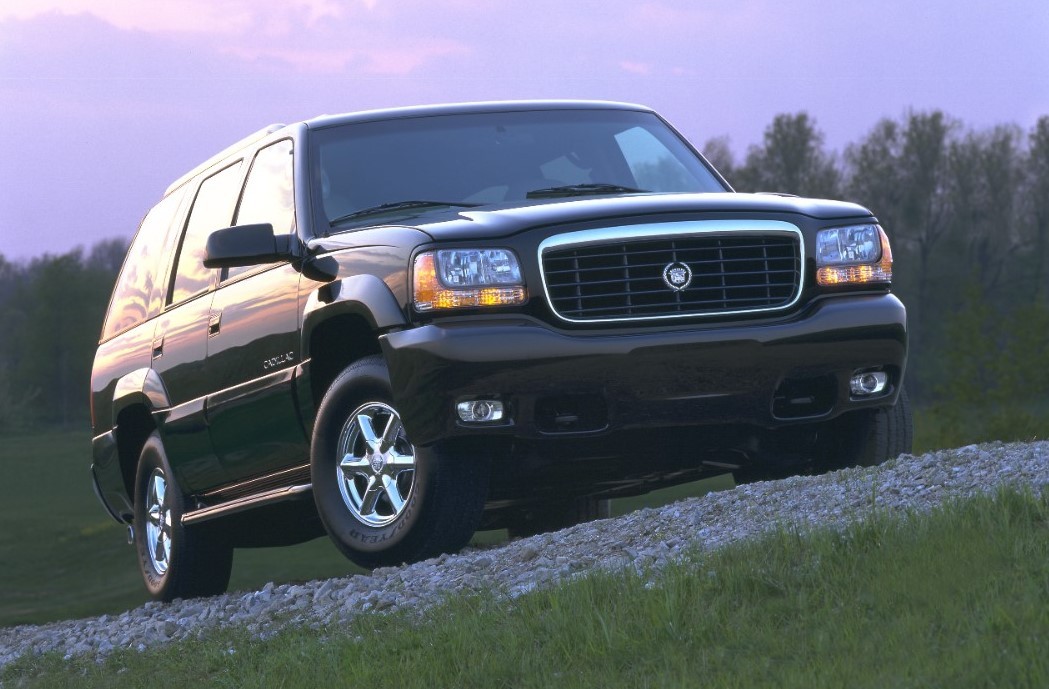
The Cadillac Escalade is among the most well-known nameplates in the automotive industry – thanks in part to its status as the preferred ride for many athletes, musicians, and movie stars. But this flashy full-size luxury SUV had a humble beginning.
In the late 1990s, the luxury SUV market was rising rapidly, and General Motors’ rivals were working on upmarket versions of their own utility vehicles. Cadillac came up with a simple yet effective solution: take GMC’s already upscale Yukon Denali and add Cadillac’s signature grille and a few other exterior and interior tweaks. Cadillac labeled its new creation the Escalade – a reference to a siege warfare tactic that involves scaling defensive walls or ramparts with the aid of ladders or siege towers.
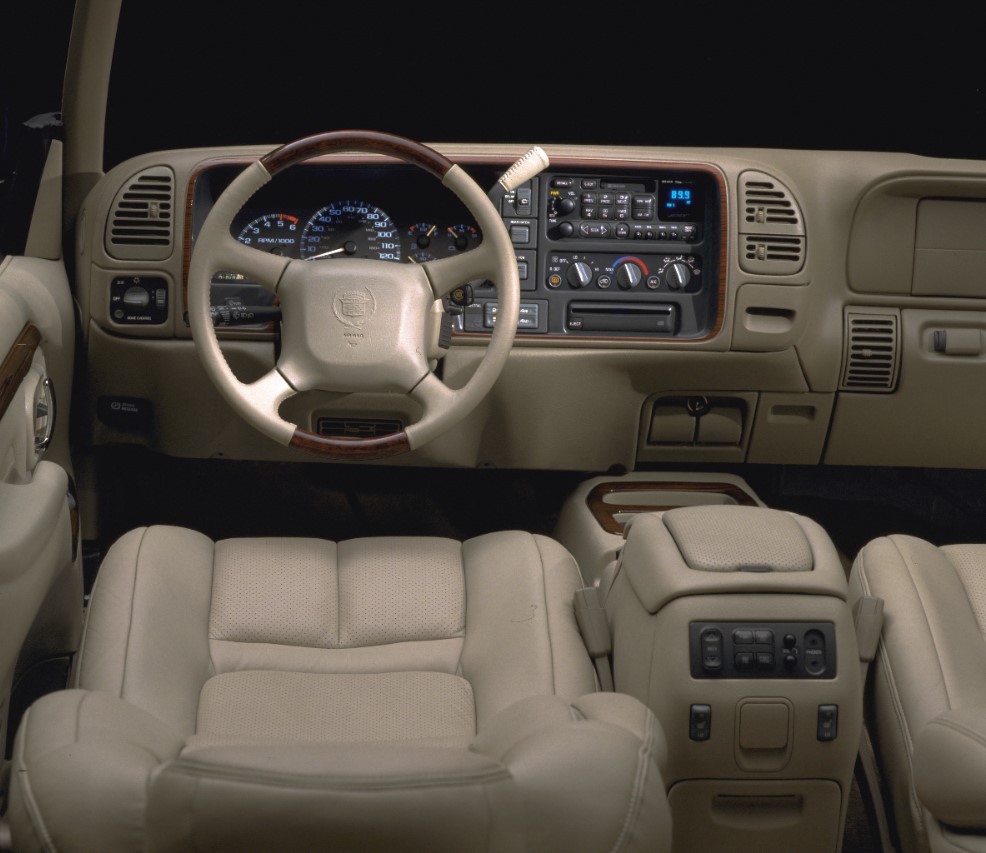
Mechanically, the 1999 Escalade was identical to its GMC-badged sibling, which enabled GM to bring it to market only ten months after the project was approved. Under the hood sat the familiar 5.7L Vortec V-8, producing 255 horsepower and 330 lb-ft of torque, which sent power to a four-speed automatic transmission connected to GM’s AutoTrac selectable four-wheel-drive system. It was built alongside the Yukon, as well as the Chevrolet Tahoe and Suburban, at GM’s Arlington Assembly plant in Texas1 – which remains the exclusive production site for the automaker’s full-size SUVs today.
Where the Escalade did differ from the Yukon was in its exterior styling and interior features. Cadillac applied its signature grille to the front of the SUV, while the interior was overhauled with perforated premium leather seating surfaces (the same used in Cadillac’s passenger cars), real wood trim, and Cadillac script on the console veneer, among other small tweaks. The Escalade also featured standard OnStar2 – early evidence of GM’s continued leadership in innovation, technology, and connected vehicles.
But the Escalade’s real story wasn’t written in spec sheets or brochures - it was written on the streets. Almost overnight, the SUV became a status symbol among America’s celebrity cohort. Cadillac executives were privately puzzled by the trend, but publicly thrilled — with these significant celebrity endorsements, there was no denying that owning a Cadillac was cool again.
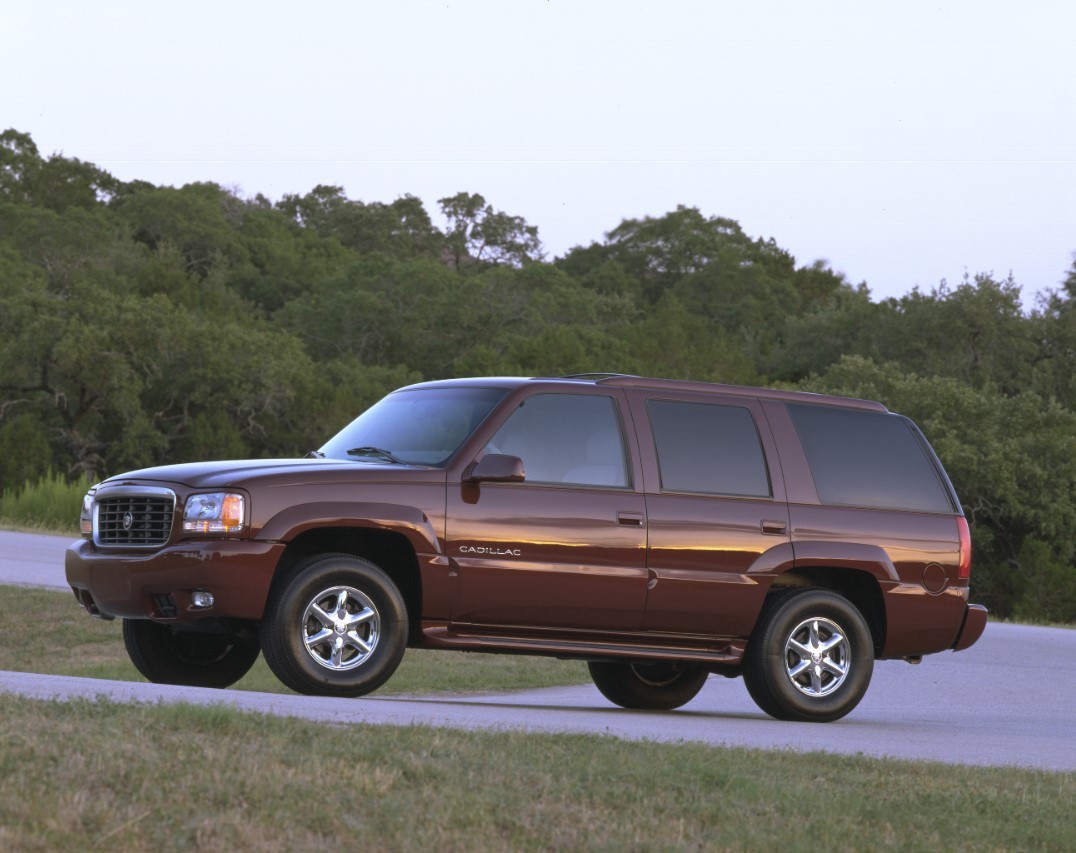
The Escalade has sold more than one million units globally since its introduction, surpassing its rivals to become the best-selling luxury full-size SUV in North America. It also serves as a technological flagship for the Cadillac brand, with the current model boasting impressive tech like a curved 55-inch diagonal pillar-to-pillar display screen, a standard 19-speaker AKG Studio Reference audio system, standard Super Cruise3 driver assistance technology, an available full-color head-up display and available power open-and-close doors.
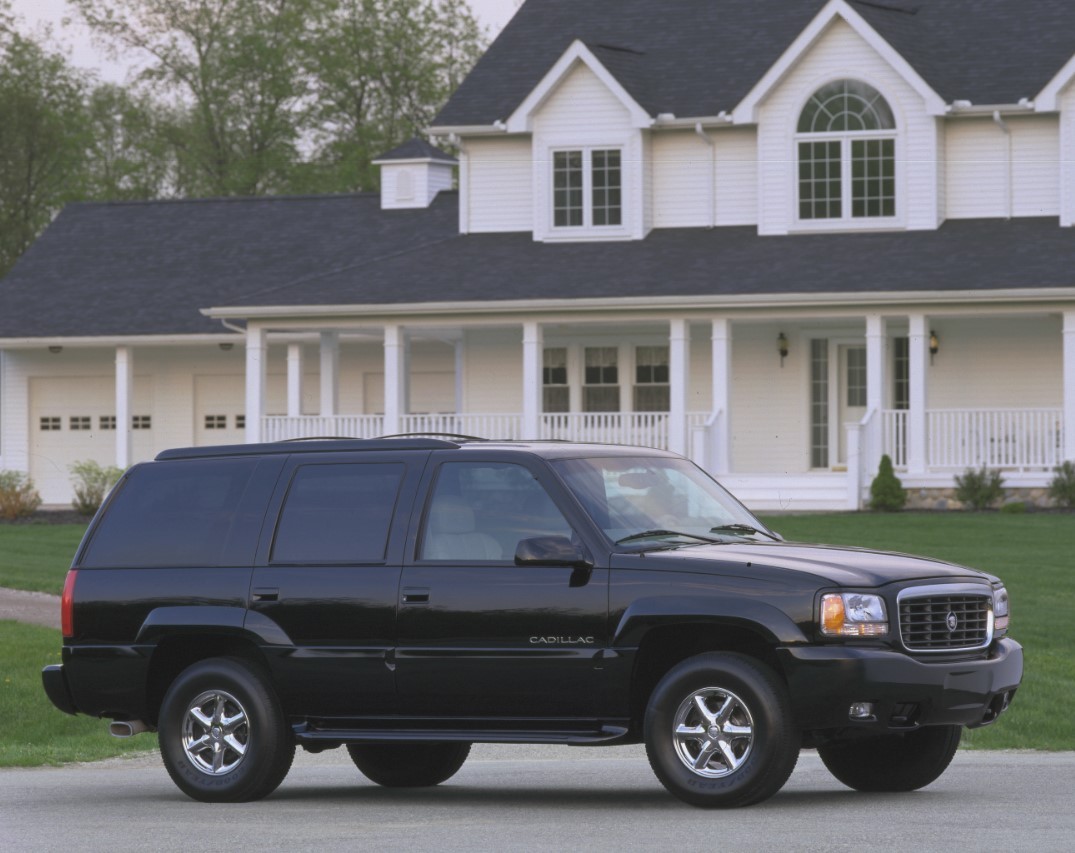
Cadillac recently added the all-electric ESCALADE IQ and IQL to its lineup, which serve as a bold reimagination of this iconic SUV and mark an important next step in Cadillac’s electric future. These models continue the Escalade’s tradition of being a rolling showcase of Cadillac’s latest technology, featuring standard Four-Wheel Steer, standard Super Cruise3 driver assistance technology, available power open-and-close doors and a 55-inch diagonal pillar-to-pillar display screen.
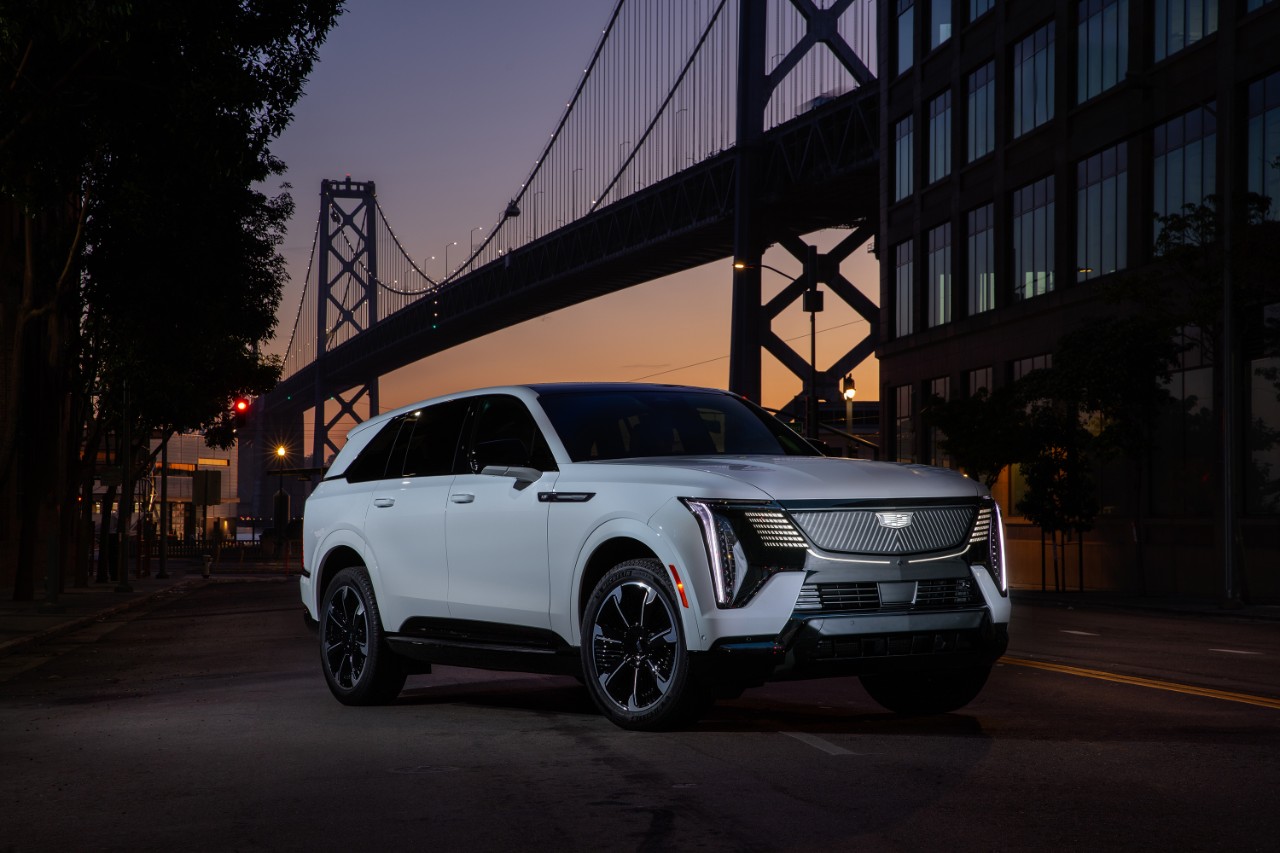
Among the most impressive features of the ESCALADE IQ and IQL, though, is the all-electric powertrain, which delivers up to 750 horsepower (with driver-selectable Velocity Max5, Cadillac estimate) and, thanks to its 24-module battery, offers a Cadillac-estimated 465 miles of range4. It also employs a flexible, high-voltage architecture with 800-volt DC fast charging, providing up to 100 miles of range in just 10 minutes of charge time5 with public DC Fast Charging.

Sam McEachern, a former automotive journalist and lifelong car enthusiast, works on the GM communications team.
Questions or comments: news@gm.com
1Assembled with globally sourced parts.
2Connected vehicle services vary by vehicle model and require an active service plan, working electrical system, cell reception and GPS signal. OnStar links to emergency services. See onstar.com for details and limitations.
3Always pay attention while driving and when using Super Cruise. Do not use a hand-held device. Requires active Super Cruise plan or trial. Terms apply. Visit cadillac.com/supercruise for compatible roads and full details.
4On a full charge based on development testing and/or analytical projection consistent with SAE J1634 revision 2017 – MCT. EPA estimate not yet available. Range subject to change prior to production. Actual range may vary based on several factors, including ambient temperature, terrain, battery age and condition, loading, and how you use and maintain your vehicle.
5Actual charge times will vary based on battery starting state of charge, battery condition, output of charger, vehicle settings and battery temperature. See the Owner’s Manual for your vehicle and charger for additional details and limitations.